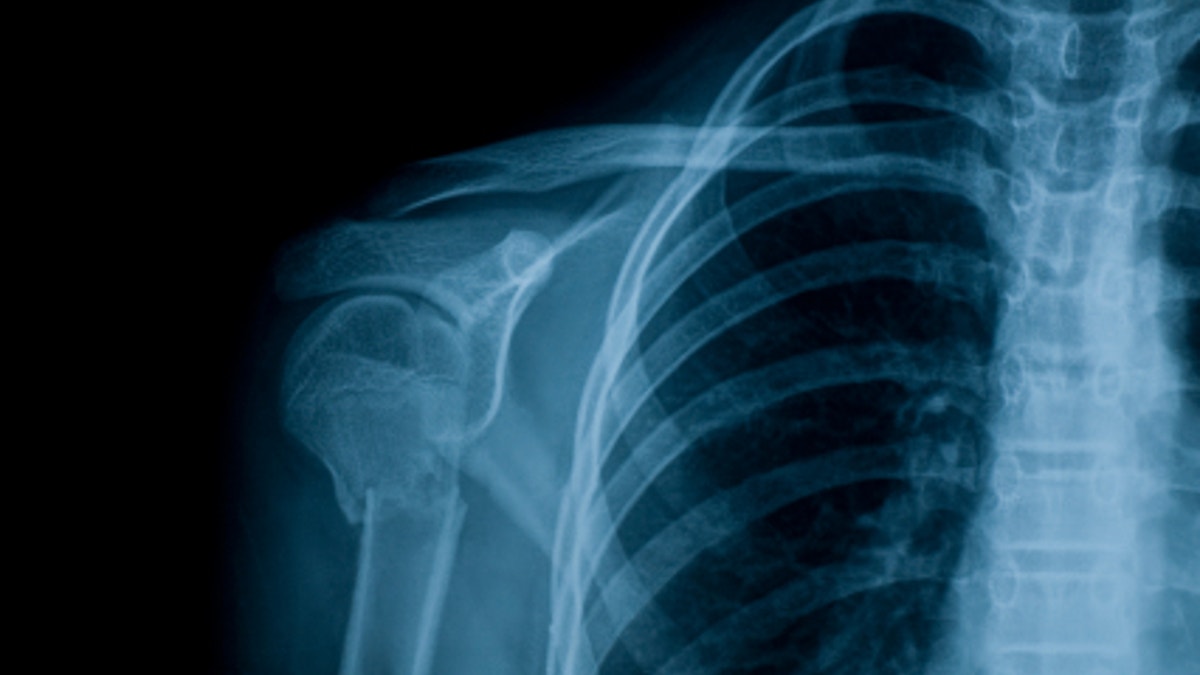
Older women with thin bones should be screened every year and those with denser bones can safely wait up to 17 years to have their next bone mineral density test, according to new research.
Current recommendations have relied on bone mineral density readings to try to predict the speed at which bones weaken with time, said lead author Dr. Margaret Gourlay of the University of North Carolina at Chapel Hill School of Medicine. "This is the first U.S. study to do it based on patients."
Based on results from 4,957 women who were studied for 15 years, the report, "makes a major contribution toward filling a significant knowledge gap in the field of osteoporosis," said Dr. Margery Gass, executive director of the North American Menopause Society, whose guidelines for brittle bone disease suggest testing postmenopausal women every two to five years.
About 10 million Americans over 50, most of them women, have osteoporosis, according to the National Institutes of Health. The cost to the U.S. health care system is as much as $18 billion per year.
Gourlay's team found that the best time to have a subsequent bone density test depended on a woman's starting point, as gauged by the so-called T score derived from using X-rays to measure the density of bones in the hip. The lower the score, the weaker the bones.
Among women age 67 or older who started out with a normal T score of -1.00 or higher, it took an average of 16.8 years for 10 percent of the group to develop osteoporosis, indicated by a score of -2.50.
They also looked at women with osteopenia, in which "your bones are thinner but not at the osteoporosis level yet," Gourlay told Reuters Health. As those T scores fell, it took less time for osteoporosis to develop in 10 percent of the women.
For women with the lowest starting scores of -2.00 to -2.49, the interval was just 1.1 years. For women with a score of -1.50 to -1.99, it was 4.7 years. And among women who scored -1.01 to -1.49, it took 17.3 years for one in 10 to progress to osteoporosis.
The researchers adjusted the analysis to account for estrogen use and risk factors for osteoporosis. The volunteers were women from Maryland, Minnesota, Pennsylvania and Oregon.
"We knew that the groups that had thinner bones to start with were going to transition to osteoporosis faster," said Gourlay. However, "we were not expecting this kind of separation between the low risk and high risk group. For those women with a T score above -1.5 to have just a 10 percent chance of making the transition to osteoporosis after 17 years was a great surprise. This was very good news."
However, the time intervals were not the same for all women age 67 and older. They shrank as women aged.
"For example, among women with moderate osteopenia, the estimated (bone density) testing interval was approximately 5 years for women who were 70 years old and approximately 3 years for those who were 85 years old," the researchers wrote in the New England Journal of Medicine.
Gourlay cautioned that the time scales may also be very different for women under 67.
"The findings in this paper will enable clinicians to recommend bone mineral density testing from an evidence-based position," Gass said in an e-mail, adding that testing has been both under-used and over-used, depending on the setting, "primarily because of lack of data to inform guidelines."
It's under-used in women over 65 and over-used "in early postmenopausal women, the majority of whom are at very low risk of fracture," she said. "Some clinicians are even getting a 'baseline' in early postmenopausal women, something no medical society is recommending."
Her group recommends screening for all women who are age 65 and older and for women ages 50 to 64 if they are smokers, consume alcohol daily, weigh less than 127 pounds, have rheumatoid arthritis, have already had a fracture suggesting that their bones might be weak or had a parent who suffered a hip fracture.
The test itself typically costs $250.
Gourlay said it's not clear if the guidelines will save money. "This tells us how to use the test better, but we're still concerned that overall the test is not ordered enough."
She cited a 2008 study of female Medicare beneficiaries over age 64 in which only 13 percent had ever gotten an initial bone density test. "This is 13 percent of the women who, everyone agrees, should have the first test."
